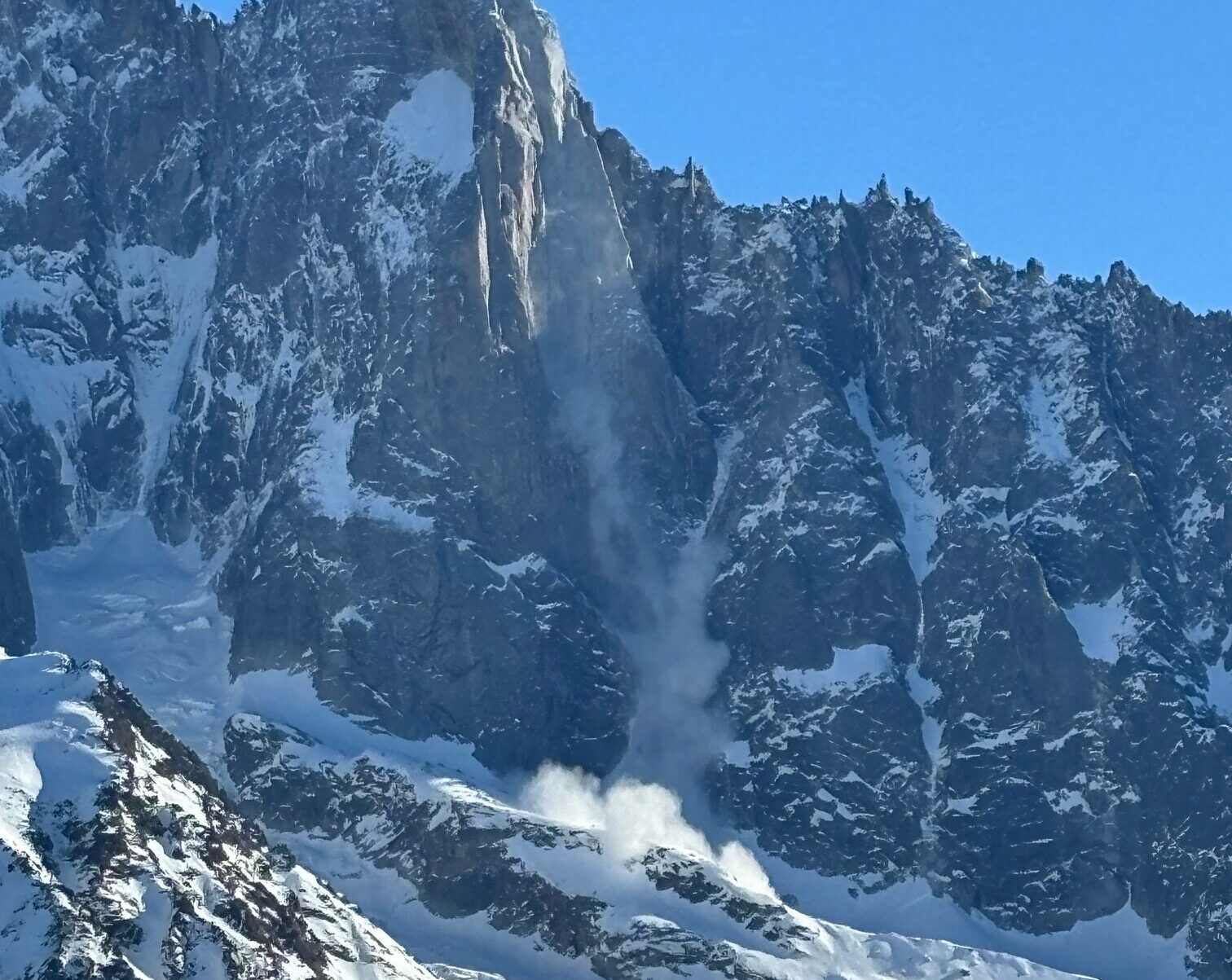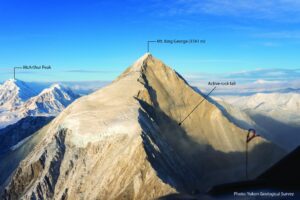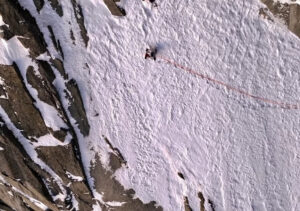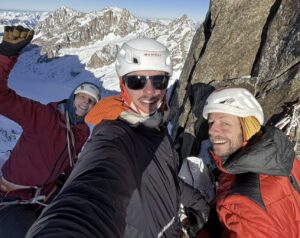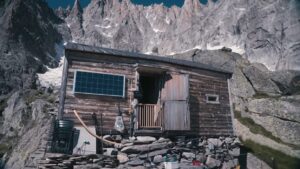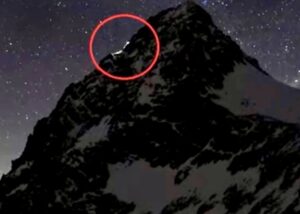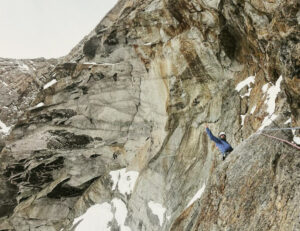Earlier this week, a massive rockfall hit the West Face of the Dru, near Mont Blanc. The slide would have been considered normal in summer or fall but not in mid-January. Luckily, no climbers were on the wall at the time.
Major rockfalls on the West and South Faces of Dru have been a constant cause of concern since the turn of the millennium. One in 2005 destroyed most of the Bonatti Pillar, one of the most admired routes on the peak.
The situation has only worsened since then. Two years ago, a major rockfall affected the access couloir to the normal route on the South Face. Another big one occurred last summer.
Unusual in winter
Such events are most common in the hottest months of the year, as the permafrost gluing the rock together melts, making the surface unstable. But the slide recorded by several climbers in the area, including well-known photographer Seb Montaz, occurred in midwinter when days are short and temperatures typically remain low.
Glaciologists and climate experts are constantly studying how conditions are evolving around Chamonix. A local alpinist gave us his take on the situation.
Professional guide and Piolet d’Or winner Hellias Millerioux admits the rock collapse was unexpected because it happened during a cold winter day. Otherwise, he says, he wasn’t surprised.
“The mountains are changing fast,” he said. “Rockfalls and collapses are how the mountains respond to changing conditions, and we will see more and more [of them].”
Millerioux: We’ll see more
“As guides and alpinists, we have to adapt,” he said. “We need to study conditions carefully and decide wisely what, how, and when to climb.”
Millerioux explained that the routes on the Mont Blanc massif, including the normal lines, are in a delicate state. Careful monitoring is essential.
“For example,” he said, “I climbed the Walker Spur last summer during a period of good but cold weather. The following week, temperatures rose, and the 0º level went up to 5,000m. In such conditions, venturing onto the Walker would have been extremely exposed to rockfall.”
Millerioux admits he’s no expert, but his experience tells him that most rockfalls happen on hot days, in fall after a hot summer, and after periods of heavy rain.
“Especially in the granite, the permafrost filling the cracks melts with the high temperatures and the rain, leaving the faces prone to collapse,” he noted. “And yet, you must be prepared for the unexpected. The West Face [of the Dru] was supposed to be okay these days, and yet there was rockfall.”
Millerioux is not optimistic about the future, especially in places like Chamonix, where the difference in altitude between the town at 1,000m and the highest points (Mont Blanc is 4,809m) is similar to that between Base Camp and the summit on Nanga Parbat.
“I have seen huge rock avalanches while on expeditions in the Himalaya, and sometimes I am concerned because a town is right below the mountains. After the 2015 Langtang earthquake, a major rockslide completely buried the village below. I don’t want to think of something like that happening here.”
More unstable after each slide
Yet, climbing teams keep scouting the legendary Dru, one of the most iconic peaks in the Mont Blanc massive. As far as Millerioux knows, the North Face of the Dru, one of the six classical North Faces of the Alps, is in good condition. As for the West Face, it is hard to tell from the images which parts and routes may have been affected. The risk is that the latest rockfall may have increased the instability of a face already weakened by previous slides.
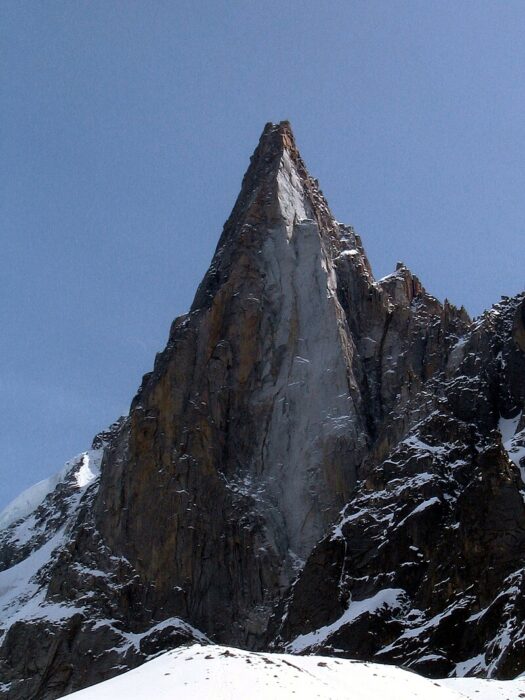
The West Face of the Petit Dru shows lighter-colored rock two years after the big 2005 rockslide. Photo: Wikipedia
The last significant climb in the region happened right at the end of last year. Between December 25, 2024, and Jan 1, 2025, a military team from Chamonix opened Petit Pont, a 1,000m route (ED, M5, 6a, A3) that goes right up the sections of the face where big rockfalls have left the face a lighter shade of grey.
